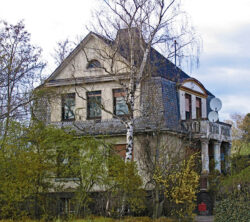Noble gases ensure optimal thermal insulation in windows
With the advent of the insulating glass windows, filling the interspacing space for thermal insulation was also of interest. At first, normal air functioned as an insulating layer. Today, it is mainly noble gases that enable lower heat transfer values.
Since the mid-1970s, double-insulation windows has continued to prevail. In contrast to the multi-pane systems already available on the market, the insulating glazing now constituted a unit which was held together by an edge composite and no longer needed any frame construction. With the entry into force of the German Heat Insulation Ordinance (WSchVO) of 1977, the final stop for single glazing came.
The hermetically sealed space of the double glazing was filled with dried air at the beginning of this development. Later, the use of sulfur hexafluoride with a half-high thermal conductivity followed. Since this gas is five times as heavy as air, one also achieved good sound insulation of the windows. However, since it contributes to climate warming as a so-called greenhouse gas in the atmosphere, it has been prohibited since 2007/2008.
Today, the Argon rare gas is used for insulating glass windows. With the much more expensive noble gas krypton, however, the same heat insulation can be achieved with a significantly smaller disc spacing. It is used above all in windows with particularly low construction depth or insulating glass variants with more than one gas layer, as in the case of passive houses, for example. The very expensive noble gas xenon is very rarely used because of its particularly low thermal conductivity in window production.


